Ron Ludekens
Field Walk - Finished Fruit Trees
Two Saturdays ago (11/14/09) I took my camera for a walk through one of our fruit tree production fields. This is a two year field with one year tops. Here is some of what I saw - a very pleasing field even for my critical eye.
The first section is in the Cherry block.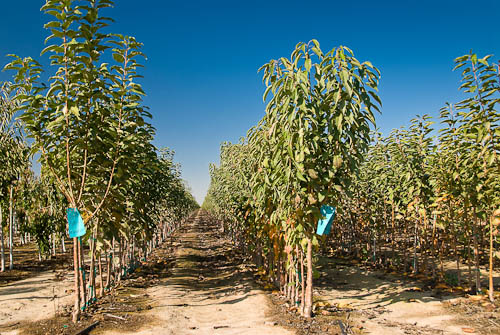
Bing Cherries - Standard
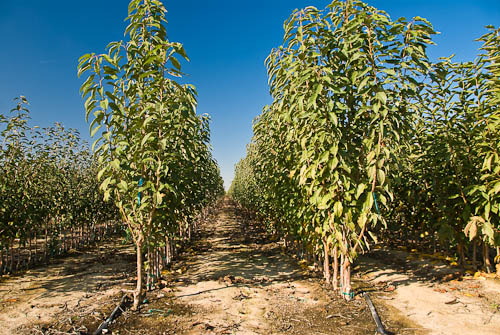 Semi-Dwarf Black Tartarian Cherries
Semi-Dwarf Black Tartarian Cherries
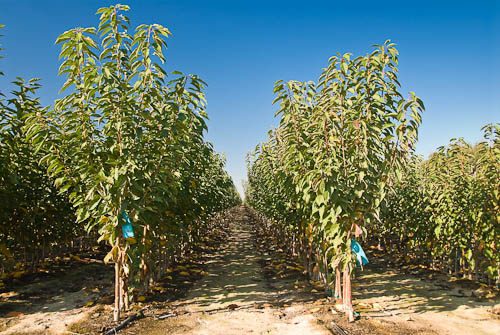
Black Tartarian Cherries - Standard
 Montmorency Cherries
Montmorency Cherries
 Rainier Cherries - Standard
Rainier Cherries - Standard
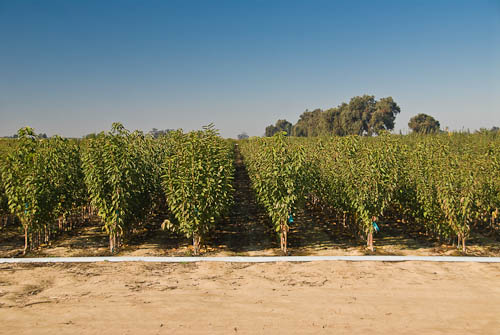 Semi-Dwarf Cherry Block
Semi-Dwarf Cherry Block
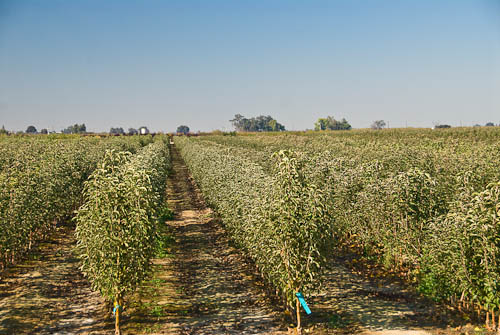 Semi-Dwarf Apples (Red Fuji in center 2 rows.)
Semi-Dwarf Apples (Red Fuji in center 2 rows.)
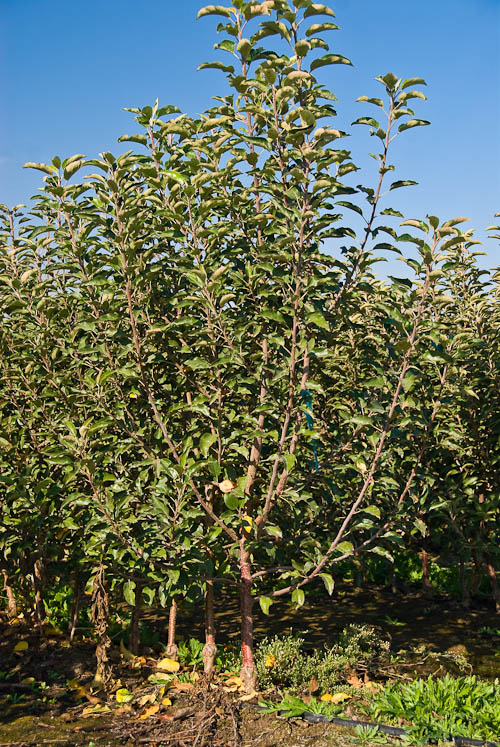 Granny Smith EZ-Pick Apple
Granny Smith EZ-Pick Apple
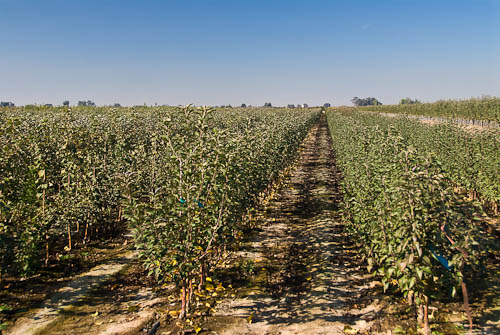 EZ-Pick Arkansas Black Apples
EZ-Pick Arkansas Black Apples
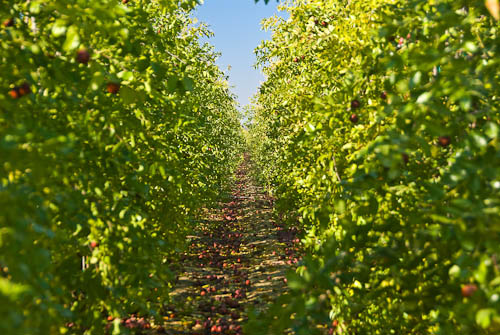
Li Jujube - Notice the copious fruit from a grafted top only 9+ months old!
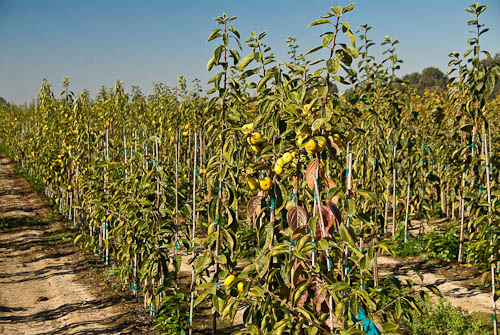
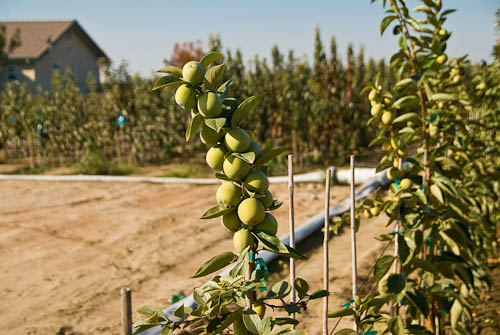
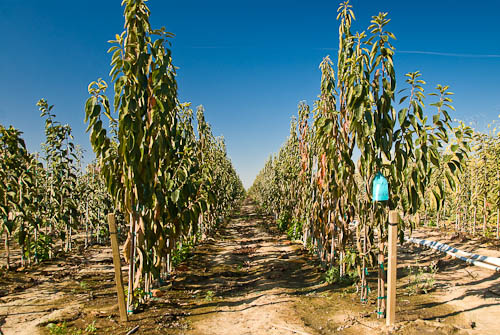
Autumn Blaze Flowering Pear Fall Color
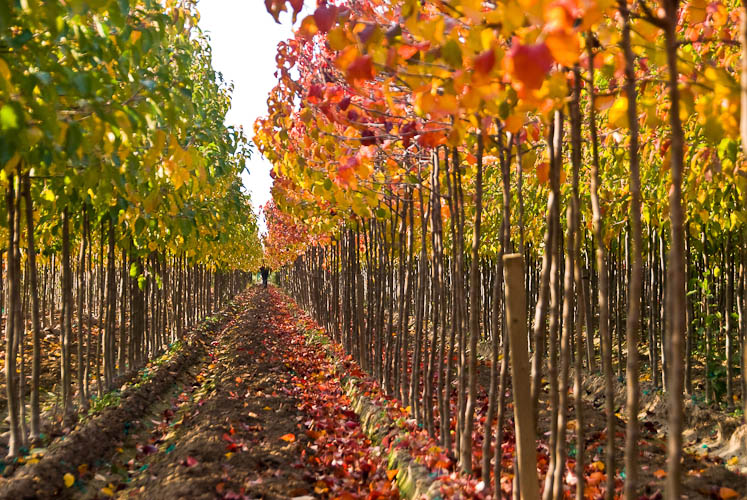
Thanksgiving Apple Pie
Earlier I wrote about the Massively Fruiting Granny Smith Spur Apple. Today I get to show the real benefits of this tree.
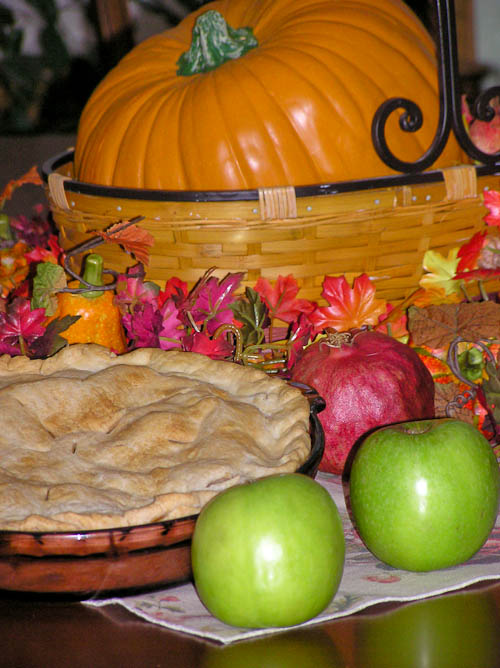
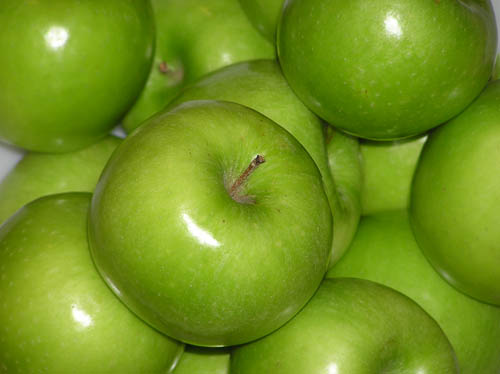
Granny Smith Apples are not only great for fresh eating - they are excellent for making pies.
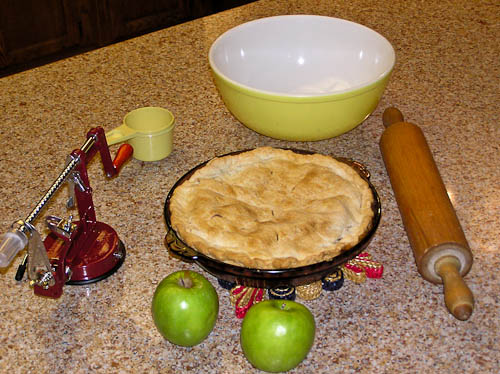
The best part of my job is eating the desserts. The hardest part is going to the gym later. Seconds anyone?
Pomegranate Juicer
Question: I have been looking for a stainless steel hand held pomegranate press...it looks like a giant garlic press...Only one store in Yuba City carried it, Harpers Ferry. They no longer carry it...I want to make my own jelly but am not able to locate one. I don't want a commerical electric juicer because I was told that the seeds would only ruin the juicer and too much of the seed would be chipped and not squeezed. CAN YOU HELP ME PLEASE TO LOCATE THIS HAND HELD JUICER???
Answer: We juice our pomegranates for jelly too (love it on toast!) so I know how juicing pomegranates can wear you out.
I too looked across Google "pomegranate hand press stainless steel" and could not find the hand press that we use although there were a lot of different types that were supposedly useful for pomegranates. Many of the citrus juicers shown can be used - and some not to be used. The hand press does a better job in my opinion by not grinding the pulp into the juice. I think I know what you are looking for, but I too could not find it. Sorry - we are not giving up ours - it is much needed to satisfy our craving for pomegranate jelly.
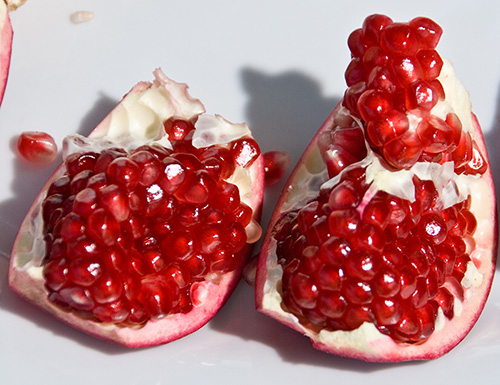
Caring for a Japanese (UME) Apricot
Question: how to take care for japanese apricot?
Answer: The Japanese Apricot Tree (Ume) is generally speaking a low-maintenance tree. Therefore simple general care is recommended.
If you are buying and planting a dormant, bare root tree dig a hole twice the width of the roots and just as deep. Place the tree and back fill the soil, watering as you go to settle out any air pockets.
You will not need to water again until there are leaves on the tree. Over-watering when the tree does not need it can prevent root formation and harm the tree. Apricot/plum roots are durable and can handle a soil pH range of 5 to 7.5 and a soil profile of sandy loam to some clay.
Prune the branches to the basic structure you want for the future. Remember, when pruning apricots, the fruit comes on the second year wood so do not prune off new growth until after it fruits the second year. Trees will reach a 15 to 20 foot height and width.
Apricots are pretty hardy trees and can handle a wide range of climates. The biggest area of risk comes with the early bloom. Apricots bloom early in the year and are at risk of losing your crop if heavy frosts come at an inopportune time. As a side benefit, the blooming period is very attractive.
We offer four varieties which may be of interest: Ume Apricot Selections
Green Seedless Grapes
Dear Sir/Madam,
Question: I would like to grow table grapes. I would like to know the name of the large white sweet seedless grape. Is it Autumn seedless or another variety?
Regards
John
Answer: There are a lot of green (white) seedless grapes - the most well known being Thompson Seedless. It would help to know where you are located so the right one(s) could be recommended for your climate.
Here are the Green Seedless Grapes that we grow and their approximate ripening time in the Central Valley of California:
Autumn Seedless Medium sized, Pale green to golden, August-September
Delight (Seedless) Large sized, Dark greenish-yellow, Late July
Himrod (seedless) Medium sized, Pale green to yellow, August-September
Lakemont (Seedless) Medium sized, pale green to golden, August-September
Perlette (Seedless) Medium sized, Amber green, Late July
Princess (Seedless) Large sized, Pale green to golden, Mid - Late August
Summer Muscat Seedless Medium sized, Green, August
Thompson Seedless Medium sized, Pale green to golden, August-September
If you live in a climate like the Central Valley of California, you are lucky and can grow any ot them. In a more coastal climate, I would look at Delight and Perlette. For colder winter areas like the Finger Lake region of New York, I would use Lakemont and Himrod.
If you like them real sweet and have the climate for it, I like Himrod. Let it hang until real ripe and it becomes a real dessert.
Remember, most of the grapes you find in the grocery stores were picked a little early so not as sweet as home grown and they are often larger because the plant hormone gibberellic acid was used by the commercial growers to enlarge them.
More descriptions on grapes can be found on page 35-39 of the Edible Fruit Guide found here: Edible Fruit Guide.
Western Schley Pecan Pollinizer
EZ-Pick Avocado Trees?
Question: I really like the idea of EZ Pick trees. For us vertically challenged, it sounds convenient as heck.
I have one question though, at least for now. Have you ever tried pruning Avocado Trees to create an EZ Pick tree? If so, were you successful?
Thanks very much,
MC
Anna Apple
Question: I live in New Orleans, La and am interested in growing the Anna apple. Can you send me the flyer for that apple tree? Also, do you think the ein shemer could be used an an effective pollinator for the Anna?
Answer: We have updated and posted the information page for Anna Apple. You can download it from here: Anna Apple.
Yes, Ein Shemer would be a good pollinizer for Anna Apple. So would Dorsett Golden Apple.
Enjoy your future harvest!
Futures In Horticulture
Over 700 high school students descended upon local nurseries October 29th.

L.E. Cooke Co and Monrovia Nurseries hosted the 8th annual "Futures in Horticulture" day which was attended by over 700 agricultural and science students from San Joaquin Valley high schools.
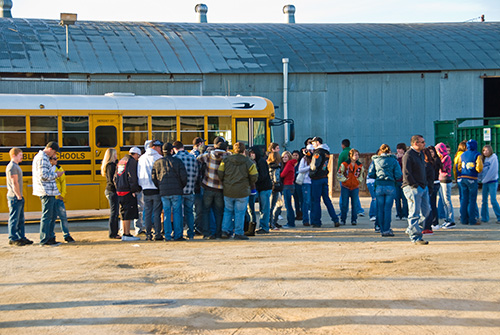
First bus arrives at L.E. Cooke for tour
The day started out with tours of L.E. Cooke Co, Monrovia Nursery, Bravo Lake Botanical Gardens in Woodlake, Urban Tree Foundation and Recreation Park - Home of the Visalia Rawhide Baseball Team.
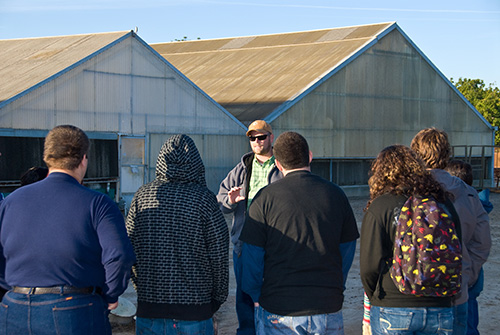
Phillip Cox leading tour near old greenhouses
It took all our management, sales staff and most of our production foremen to handle the crush of youth descending in busloads on the nursery for the morning (and afternoon) tours.
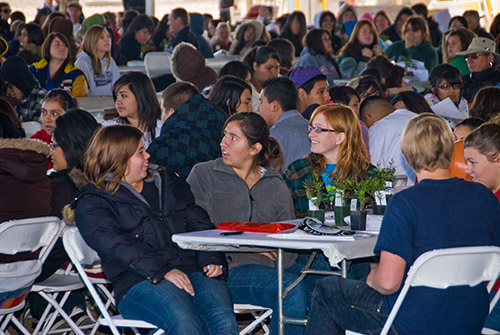
After the tours, the youth went to Monrovia Nursery for educational presentations by representatives working in agriculture industries (commercial landscapes, irrigation, landscape architects, sports turf, pest management, nurseries) and advanced Educational opportunities from 9 local and state colleges or universities.
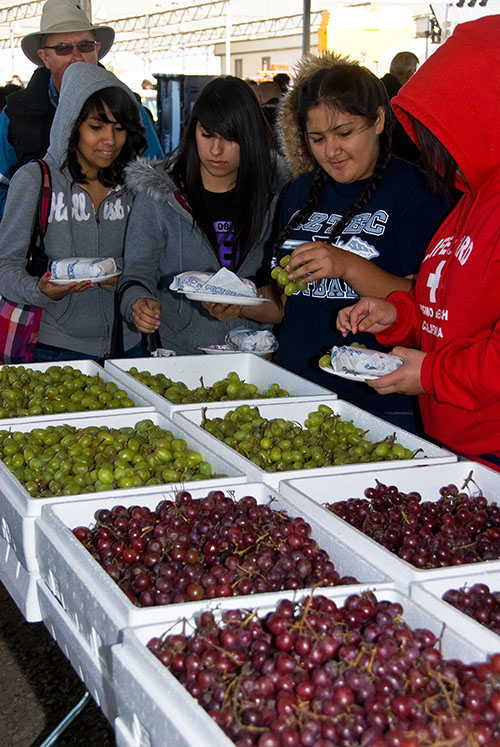
Students & faculty dining on local valley harvested fruits
During and after lunch the students could visit the tables/booths set up by the various colleges and agricultural businesses to learn more.
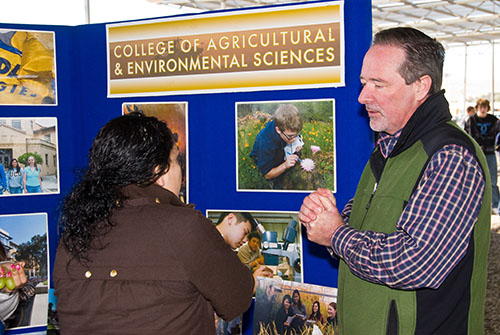
Student learning more about U.C. Davis
WHY?
The "Futures in Horticulture" day was the brainchild of my father, Bob Ludekens, about 10 years ago when his friends and contacts at Cal Poly, San Luis Obispo lamented the decline of horticulture students and the pending reduction or closure of the Horticulture program and courses. Apparently this decline was happening all across the state (U.C. Davis, Chico, Fresno State, etc) and did not bode well for the Horticulture industry in California.
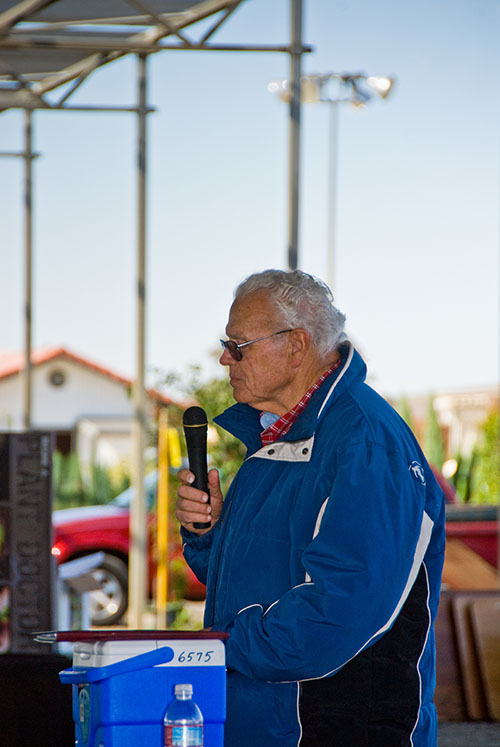
Bob Ludekens addressing the students
For example, many of the key leaders in our industry on the West Coast have come from the Cal Poly program - including the current president of ANLA, Tom Courtright. Many retail nursery owners and key managers at wholesale nurseries received practical training in Horticulture from CP-SLO. Bob felt High School students needed to be exposed to the potential opportunities for careers in our industry and encourage them to investigate further higher educational opportunities.
It is gratifying to see the support by the horticultural industries, the 9 colleges and universities which bring their representatives from the Hort departments and California Association of Nurseries and Garden Centers (CANGC) who helped fund this day. And a special thanks to Monrovia Nurseries for hosting the presentation site and all the work to set up and clean up that goes along with it.
In a tough economic year, it was surprising to see the continued growth of student numbers who attended. Apparently the schools felt the importance of this day to dig into their meager budgets to fund the buses for the trips.
More photos of the day can be seen here: Futures in Horticulture

